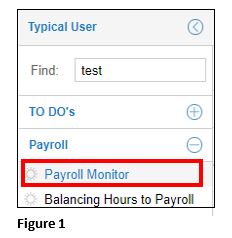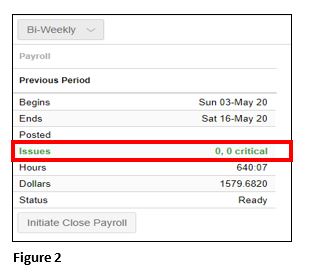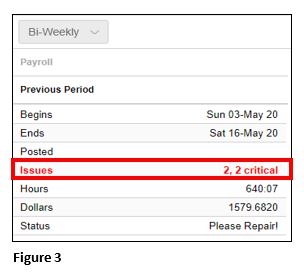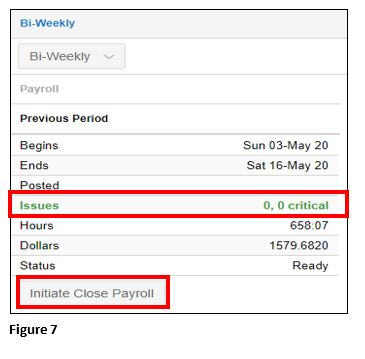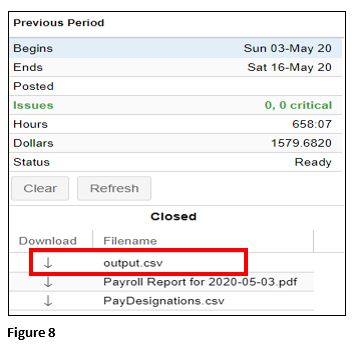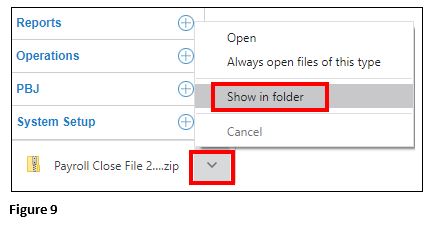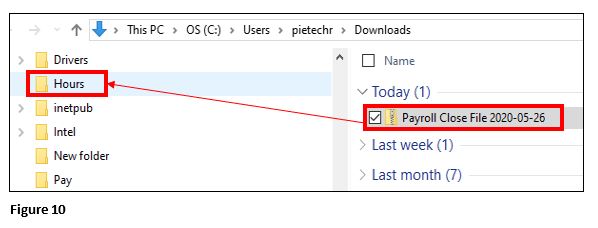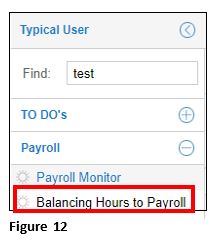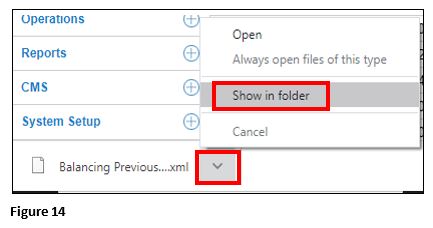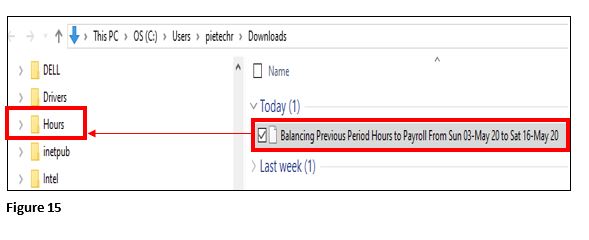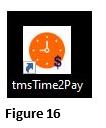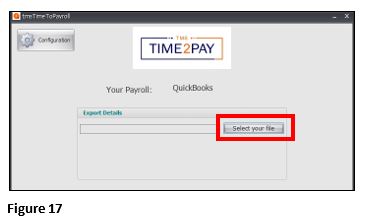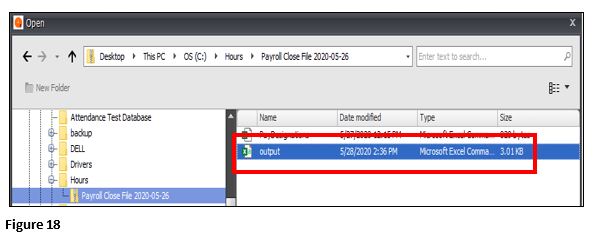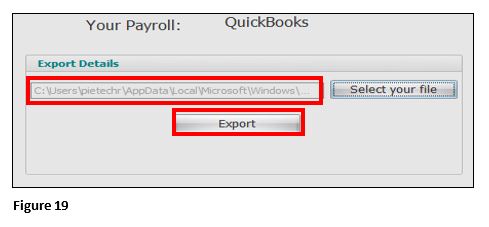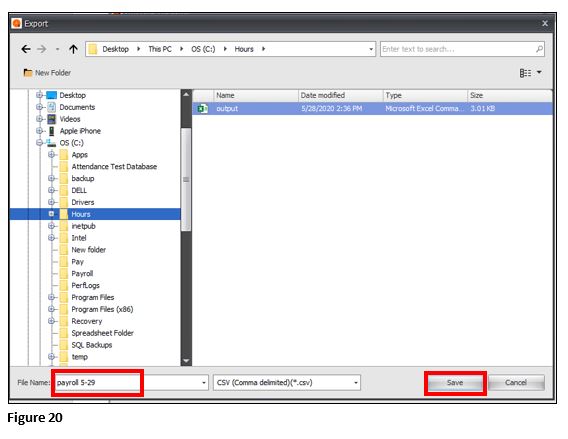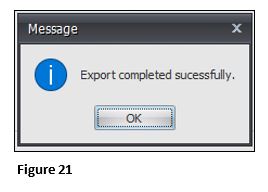Running tmsTime2Pay with a QuickBooks Export with Chrome (Core)
Summary
This document addresses work instructions for how to run tmsTime2Pay with a QuickBooks export using Chrome.
1. Log into tmsConneXion; also, QuickBooks should be open.
2. Select Payroll and Payroll Monitor from the quick menu (Figure 1).
3. Confirm you have no critical issues in the Previous Period and the Issues row is Green (Figure 2). If you do have Critical exceptions, see Step 4, otherwise, skip to Step 8.
4. If you have Critical exceptions which are typically caused by missing punches, you will want to address these before running payroll. To see the Critical Exceptions, click anywhere in the Issues row (Figure 3).
5. Upon clicking on the Issues, you will be taken to a list of employees who need something corrected; the Condition will alert you to the specific issue. Click on the employee’s name to be taken to their timecard where the exception can be fixed. Repeat this step for each employee on the list. (Figure 4).
6. On the employee timecard, look for the Missing Punch in the Description field; add the missing punch(es) (Figure 5).
7. You may use the Breadcrumb Trail in the upper right-hand corner to either go back to your employee list (Previous Period) or back to the Payroll Monitor by clicking whichever you prefer (Figure 6). Please note that the employee you just fixed may continue to show in the list.
8. Once all of the Critical Exceptions have been fixed, Payroll Monitor will change the Issues row to Green and you are ready to proceed. Click on Initiate Close Payroll and the system will now generate payroll data. This may take a moment to run. (Figure 7).
9. Once finished, an output.csv file will be available for download (Figure 8).
10. A zipped file will open at the bottom of the screen; click the arrow and select Show in folder (Figure 9).
11. You will be taken to your Download folder where you will see a zipped file called Payroll Close File. In this example, a folder was created on the C:\ called Hours (Figure 10). You may call it anything you want; however, this will be the location where you save this file for every payroll cycle. Move the Payroll Close File to the Hours folder.
12. To see the files that have been downloaded, open the Hours folder and double click on the Payroll Close File; you will see output, PayDesignation and Payroll Report files (Figure 11).
13. This step is optional but you can produce a file that you may use to compare to the file you will provide to QuickBooks and one that may be kept for historical purposes. In the Manager Portal, select Balancing Hours to Payroll (Figure 12).
14. Select Excel (Figure 13).
15. An .xml file will open at the bottom of the screen; click the arrow and select Show in folder (Figure 14).
16. From the Download folder, move the Balancing Previous Period file to the same folder as before; again, in this example we will use the Hours folder (Figure 15). This file may be used to cross-check the information being provided to QuickBooks.
17. Open tmsTIme2Pay by clicking on the icon on your desktop (Figure 16).
18. Click Select your file (Figure 17).
19. Navigate to the C:hours/payroll close file folder and find the output.csv file you saved; click on it and select Open (Figure 18).
20. Once the file has been selected, click Export (Figure 19).
21. Enter in the name of what you would like to call your file, select the location, and click Save (Figure 20).
22. If successful, the following message will display (Figure 21).
23. The file is now available to upload to QuickBooks (Figure 22).
